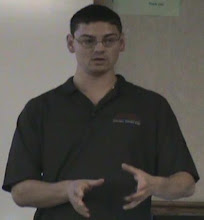In the current thesis we first talk about the six-qubit quantum error-correcting code and show its connections to entanglement-assisted error-correcting coding theory and then to subsystem codes. This code bridges the gap between the five-qubit (perfect) and Steane codes. We discuss two methods to encode one qubit into six physical qubits. Each of the two examples corrects an arbitrary single-qubit error. The first example is a degenerate six-qubit quantum error-correcting code. We prove that a six-qubit code without entanglement assistance cannot simultaneously possess a Calderbank-Shor-Steane (CSS) stabilizer and correct an arbitrary single-qubit error. A corollary of this result is that the Steane seven-qubit code is the smallest single-error correcting CSS code. Our second example is the construction of a non-degenerate six-qubit CSS entanglement-assisted code. This code uses one bit of entanglement (an ebit) shared between the sender (Alice) and the receiver (Bob) and corrects an arbitrary single-qubit error. In the second half of this thesis we explore the yet uncharted and relatively undiscovered area of quantum steganography. Steganography is the process of hiding secret information by embedding it in an innocent message. We present protocols for hiding quantum information in a codeword of a quantum error-correcting code passing through a channel. Using either a shared classical secret key or shared entanglement Alice disguises her information as errors in the channel. Bob can retrieve the hidden information, but an eavesdropper (Eve) with the power to monitor the channel, but without the secret key, cannot distinguish the message from channel noise. We analyze how difficult it is for Eve to detect the presence of secret messages, and estimate rates of steganographic communication and secret key consumption for certain protocols.

(Image is from the paper.)

No comments:
Post a Comment